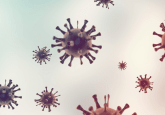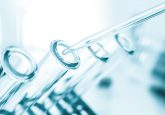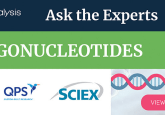Updates in oligonucleotide-based therapies

Therapeutic oligonucleotides are an integral new drug modality for development and discovery, as they have the potential to treat a wide range of diseases. Over the years, the number of approved oligonucleotide-based therapies has increased due to this great potential. In this article, we summarize some of the latest research focused on the current applications and challenges associated with therapeutic oligonucleotides.
Researchers develop an approach to scale-up oligonucleotide manufacturing
Scientists from The University of Manchester (UK) have presented a new sustainable and scalable approach to the production of oligonucleotides, which addresses the current issues such as substantial waste, limited scalability and low yield.
Sarah Lovelock, Senior Lecturer at The University of Manchester, commented:
“Many pharmaceutical companies have therapeutic oligonucleotide candidates in their pipelines, including those for common diseases. The development of more scalable and sustainable approaches to oligonucleotide production will be key to ensuring the widest possible access to this powerful class of therapeutics.”
To find out more, read the full research article here: https://www.science.org/doi/10.1126/science.add5892
You may also be interested in:
- Poster: Enhancing the sensitivity of a hybridization-assay for the measurement of an antisense oligonucleotide in clinical samples
- Measuring therapeutic oligonucleotides in biological matrices: a review of hybridization assay formats
- Technology Digest: LBAs vs chromatographic platforms for oligonucleotide quantification
Artificial antisense oligonucleotides tested as therapeutic for xeroderma pigmentosum
A genetic team from Nagoya University, (Japan) have found a potential therapeutic target for the rare genetic skin condition, xeroderma pigmentosum (XP), using artificial antisense oligonucleotides. Due to its rarity, XP is understudied and has limited treatment options. Therefore, there is a necessity for better understanding, diagnosis and therapeutic targets for XP.
The team attempted to correct the abnormal splicing events in patient cell samples through artificial antisense oligonucleotides. They found that after the treatment, the XP protein expression recovered to a normal level indicating restored mRNA processing.
To discover more, read the full research article here: https://www.pnas.org/doi/10.1073/pnas.2217423120
This study, published in Bioanalysis, assesses whether capillary microsampling could be applied to the bioanalysis of antisense oligonucleotides not just small molecules. Microsampling techniques have been gaining increasing interest in drug research and development for the quantification of drugs, their metabolites or endogenous substances in liquid biological samples.
The research team demonstrated that the validated capillary microsampling method was successfully applied to support good laboratory practice safety studies in mice. This work is the first to report using capillary microsampling for liquid chromatography–tandem mass spectrometry quantitative bioanalysis of antisense oligonucleotides.
To learn more, read the full Bioanalysis article here: https://www.future-science.com/doi/10.4155/bio-2023-0096
If you would like to explore more content on oligonucleotides, click the link to find out more on Bioanalysis Zone





